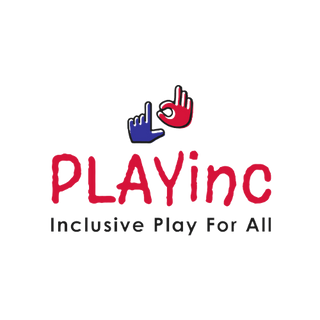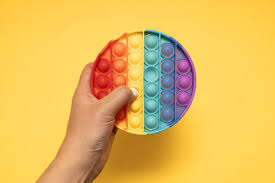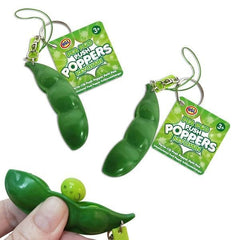In recent years, the world of sensory toys has seen a remarkable evolution, and among the most captivating innovations are the Pop It fidget toys, particularly the Bubble Push Poppers. These toys, with their satisfyingly tactile bubbles, have gained immense popularity, not only as sources of entertainment but also as tools that offer numerous benefits for children with ADHD, autism, and additional needs. In this article, we'll delve into the features and advantages of these new Pop It products, shedding light on how they are changing the landscape of sensory play for children who require extra attention and support.
Why are Pop It Fidget Toys so popular?
They're a contemporary spin on the classic fidget toys and have taken the world by storm. These palm-sized wonders consist of a sheet of silicone bubbles arranged in a grid pattern. Children can push down on these bubbles, creating a satisfying sensory experience that engages their tactile senses. The soft pop sound that accompanies each push adds an auditory element to the play, enhancing the overall sensory experience. Available in an array of shapes, sizes, and vibrant colors, Bubble Push Poppers provide a visually stimulating activity as well.
Benefits for Children with ADHD and Autism
Sensory Engagement: Children with ADHD, autism, and additional needs often struggle with sensory processing. Pop it Fidgets provide a safe and enjoyable outlet for sensory engagement, allowing them to explore different textures, sounds, and visual stimuli. This engagement can help them regulate their sensory input and improve their overall sensory processing abilities.
Calming Effect: The repetitive and rhythmic pushing and popping of the bubbles can have a calming effect on children who experience heightened levels of anxiety or restlessness. This soothing activity can serve as an effective self-regulation tool, helping them manage their emotions and focus their attention.

Focus and Concentration: For children with ADHD, maintaining focus and concentration can be challenging. Bubble Push Pop It's offer a hands-on way to redirect their attention and enhance their concentration. The tactile stimulation can act as a sensory anchor, aiding them in staying engaged and on-task.
Fine Motor Skills Development: Many children with autism and additional needs struggle with fine motor skills. Using pop it fidget toys requires precise finger movements, which can contribute to the development of fine motor skills and hand-eye coordination. This hands-on manipulation of the toy can be therapeutic, helping them refine their motor abilities.
Social Interaction: These new Pop It products also have the potential to encourage social interaction. While playing with them, children can share the sensory experience with peers or family members, leading to shared enjoyment and social bonding.
Safe Outlet for Stimming: Stimming, or self-stimulatory behaviour, is common among children with autism. Bubble fidget toys offer a safe and socially acceptable outlet for stimming, allowing children to satisfy their sensory needs without drawing negative attention.
Conclusion
In a world that's constantly evolving, the innovation of new Pop It toys like Bubble Push Poppers has brought a renewed focus on the importance of sensory play, especially for children with ADHD, autism, and additional needs. These toys go beyond mere entertainment; they serve as powerful tools for sensory engagement, emotional regulation, and skill development. By catering to the unique needs of these children, pop It fidget toys are revolutionizing the way we approach play, learning, and support. As we continue to explore and embrace the benefits of these innovative toys, we open up new avenues for growth, development, and inclusivity in the realm of childhood experiences.




